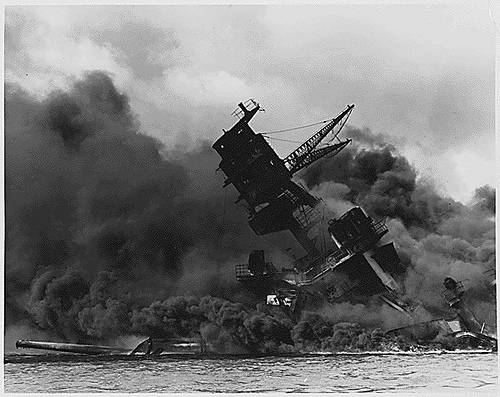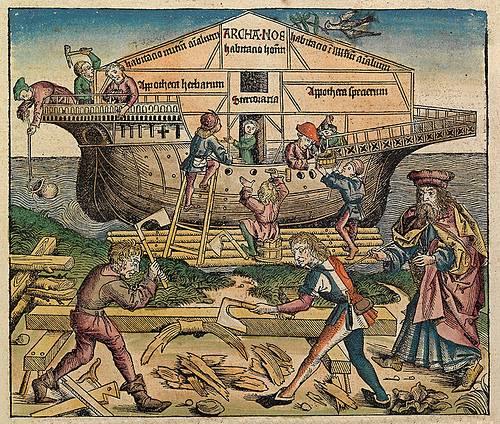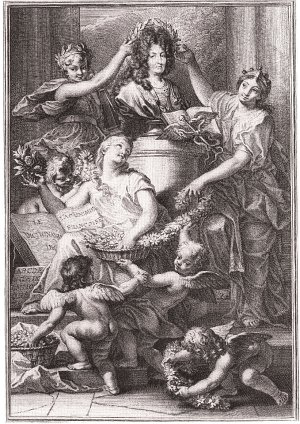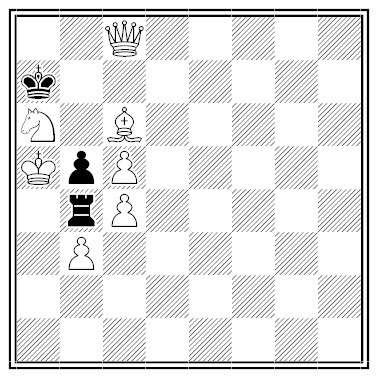
On its final exam each year, beginning in 1931, the Japanese Naval Academy asked its students, “How would you carry out a surprise attack on Pearl Harbor?”

On its final exam each year, beginning in 1931, the Japanese Naval Academy asked its students, “How would you carry out a surprise attack on Pearl Harbor?”
A singular establishment exists in Russia–the imperial hotel for old worn-out horses, built in the park of Tzarkoe Selo, for the reception of animals employed in the service of the emperor. A special cemetery is annexed to the building, and tombstones record the names of the horses buried, those of the sovereigns who had ridden them, as well as the battles and memorable events at which the animals had been present.
— The Veterinarian, June 1862

Early editions of the Encyclopedia Britannica accepted Noah’s ark as real, to the point of discussing how the animals were arranged and fed:
Bishop Wilkins computes all the carnivorous animals equivalent, as to the bulk of their bodies, and their food, to 27 wolves; and all the rest to 280 beeves. For the former, he allows 1825 sheep; and for the latter, 109,500 cubits of hay; all which will be easily contained in the two first stories, and a deal of room to spare.
That’s from the 1797 edition. By 1860, realizing that an ark couldn’t possibly accommodate all the world’s species, Britannica suggested that the flood had covered only the parts of the earth inhabited by men. By 1911 it was describing the whole story as myth — and in 1960 it remarked on the “many ingenious and curious theories” that had once been advanced to support the story.

“Sometimes I think we’re alone in the universe, and sometimes I think we’re not. In either case the idea is quite staggering.” — Arthur C. Clarke
When Tamara Rabi arrived at Hofstra University in 2003, strangers would smile, wave, and greet her as if they knew her. Finally a friend told her she looked just like Adriana Scott, another 20-year-old at a neighboring college. Both women had been born in Mexico, both were adopted, and both had the same birthday.
It turned out the two were identical twins who had been separated at birth in Guadalajara, adopted independently by New York families, and raised as only children 25 miles apart, Adriana in a Roman Catholic household on Long Island and Tamara with a Jewish family in Manhattan.
When they were reunited, both were studying psychology, both wore the same silver hoop earrings, and both remembered the same childhood dream. “We have the same mannerisms, the same interests, the same grades in school,” Adriana said.
Curiously, both adoptive fathers had died of cancer. What does that mean?
A maiden once, with eyes of blue,
And mischief a suggestion,
Propounded all her friends unto
A geographic question.
“Why all degrees of latitude
Were longer at th’ equator?”
Their answers brought beatitude
And highly did elate her:
For Mr. Smithson talked to her–
With knowledge was he sated–
“‘T was due to a parabola,”
He wisely demonstrated;
And Mr. Whyte, he murmured much
Of “radial defections,”
While Robinson, with dainty touch,
Discoursed of conic sections;
Then Mr. Browning flowery grew,
And filled himself with glory
By telling much more than he knew–
It was a wondrous story!
But all sit now disconsolate,
And cut a woful figure–
They’ve learned, when it was all too late,
Degrees down there aren’t bigger.
— Anonymous, in A.C. McClurg, The Humbler Poets, 1910

When Louis XIV asked, “What time is it?”, he was told, “Whatever time your majesty desires.”
When Louis comforted the duke of Saint-Aignan on the death of his son, Roger de Rabutin wrote, “It is only near him that a parent can find some pleasure in losing his children.”
When Louis asked Boileau’s opinion of his verses, the poet said, “Ah, sire, I am convinced that nothing is impossible to your majesty. You desired to write some poor rhymes, and you have succeeded in making them positively detestable.”
During a lecture on chemistry, Louis Jacques Thénard told Charles X, “These gases are going to have the honor of combining before your majesty.”
The subjects of James I expressed the wish that he might reign over them as long as the sun, moon, and stars should endure. “I suppose, then,” muttered the king, “they mean my successor to reign by candlelight.”
In 1989, a Philadelphia financial analyst visited a flea market in Adamstown, Pa., spotted an old painting whose frame he liked, and purchased it for $4.
When he removed the frame, he found a folded document between the picture canvas and the wood backing. And the document appeared to be the Declaration of Independence.
It was. He had discovered an original printing of the Declaration from its first printing in 1776. Sotheby’s auctioned it for $2.42 million in 1991, then again for $8.14 million in 2000.
“This was how Congress voted to disseminate the news of independence,” said Sotheby’s vice chairman David Redden. “So it was printed up from Thomas Jefferson’s draft of the Declaration and then sent around by couriers to the armies in the field, to the newly independent colonies, to the committees of public safety, and surely to the British, too.”
How it got into the painting is unknown.

An anonymous puzzle from the British Chess Magazine, 1993. White to mate in half a move.